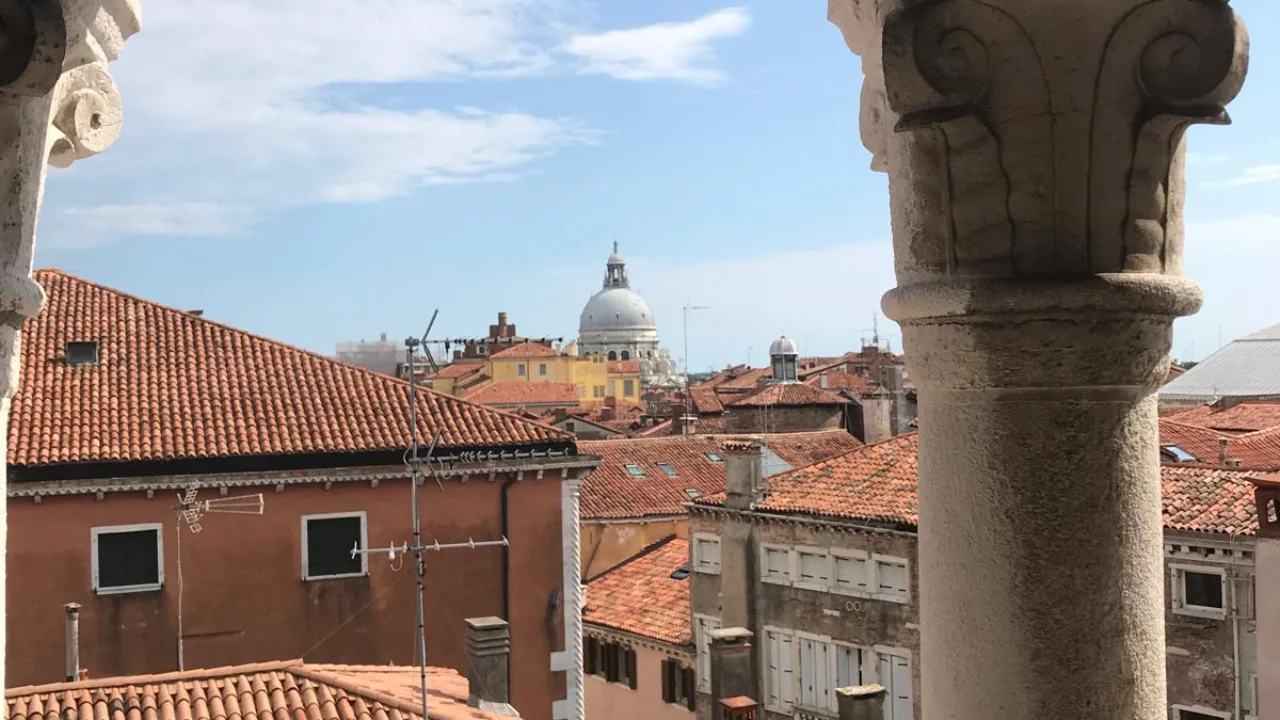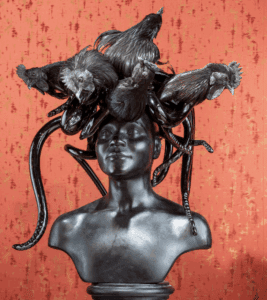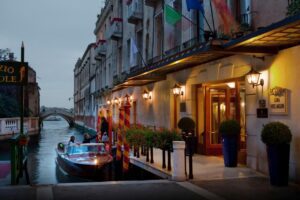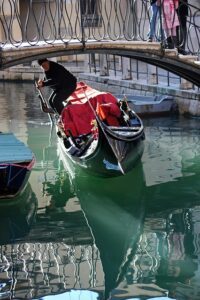Is Venice Safe? Complete Local Guide to Safety, Health & Acqua Alta (From a Venetian Insider)
Venice is one of the most enchanting and safest cities on Earth. No cars. No roaring motorbikes. Just canals, bridges, and the quiet rhythm of footsteps on ancient stones.
But this floating masterpiece comes with its own set of quirks — from slippery bridges to sudden tides known as acqua alta. To enjoy Venice without a worry, you need to understand how the city works. Think of this as your complete Venice safety guide — written by locals who live (and walk) it every day.
Here’s how to explore La Serenissima with confidence: where to walk, what to watch out for, and how to handle the occasional flood with grace — Venetian style.
Part 1 — General Safety in Venice
1.1 Is Venice Safe for Travelers?
Yes — Venice is exceptionally safe. Violent crime is almost nonexistent, and even pickpocketing is minor compared to other major European cities.
What you’ll mostly need to watch for are:
- 🎒 Pickpockets — particularly in crowds at the Rialto Bridge, St. Mark’s Square, or aboard packed vaporetti (water buses).
- 💸 Tourist scams — unofficial porters.
- 🚶 Minor accidents — slipping on wet stones, tripping on bridges, or misjudging a canal’s edge.
Insider truth: The biggest “danger” isn’t crime — it’s your own tired feet after ten kilometers of beauty.
1.2 Pickpockets and Crowds
Venice is crowded in high season, especially around St. Mark’s and the Rialto Bridge. Pickpockets work in pairs or small groups, often blending in as fellow tourists.
- Keep your bag zipped and in front of you.
- Use a crossbody bag or hidden pouch.
- Never leave your phone or camera on café tables unattended.
Most locals can tell when someone’s distracted — staring at the view while someone brushes by. Be aware, but don’t become paranoid. Venice is meant to be savored slowly, not feared.
1.3 Night Safety 🌙
When darkness falls, Venice grows quiet — hauntingly beautiful, but peaceful. You’ll hear church bells echoing across canals and footsteps instead of traffic.
- Walking at night is safe, even for solo travelers.
- Some alleys are dimly lit but secure.
- The liveliest spots are Campo Santa Margherita (student nightlife) and San Marco’s elegant bars.
Local tip: Getting a little lost is almost a Venetian rite of passage. Just carry your hotel’s card or a map — and let the labyrinth lead you somewhere magical.
1.4 Water Safety 🌊
Venice’s canals are romantic — but they’re not fenced or guarded.
- Keep children close on bridges without railings.
- Don’t lean too far for selfies or photos.
- Swimming is strictly prohibited (and fined) in all canals.
Venetians respect the water — it’s their road, their livelihood, and their mirror. Treat it the same way, and you’ll be perfectly safe.
Part 2 — Health Tips for Visitors ❤️🩹
2.1 Walking & Foot Care
Venice is a walking city — and that’s part of its charm. Expect to walk 10 to 15 kilometers per day without noticing. But cobblestones and bridges can challenge even the fittest travelers.
- Wear comfortable shoes — waterproof sneakers are best.
- Avoid heels or slippery soles.
- Carry blister patches — you’ll thank yourself on day two.
Local anecdote: Every day, we see travelers limping across bridges in designer shoes. The next morning? They’re at the pharmacy buying sneakers.
2.2 Staying Hydrated and Cool ☀️
Summers in Venice can be hot and humid, with temperatures often above 30°C (86°F).
- Carry a refillable bottle — public fountains offer free, clean water (acqua potabile).
- Wear hats and sunscreen.
- Plan museum visits between noon and 3 PM — prime heat hours.
Bonus tip: Refill bottles at fountains like Calle dei Fabbri or Dorsoduro’s Campo Santa Margherita — locals do it every day.
2.3 Winter Health Tips ❄️
Winter brings mist, rain, and a cinematic melancholy — perfect for slow travelers. But it’s damp.
- Dress in layers — the lagoon breeze makes it feel colder than it is.
- Waterproof boots are essential, especially if you visit between November and February.
- Warm up with vin brulé (Venetian mulled wine) or creamy hot chocolate at Caffè Florian.
2.4 Emergencies & Hospitals 🚑
- 112 — General emergency (European number).
- 118 — Ambulance and medical assistance.
- Ospedale Civile SS. Giovanni e Paolo — Main hospital in Castello, accessible by vaporetto.
Pharmacies (farmacie) are marked with a glowing green cross. Staff speak English and can advise on over-the-counter medicine or small injuries.
Part 3 — Understanding Acqua Alta (High Water) 🌧️
3.1 What Is Acqua Alta?
Acqua alta literally means “high water.” It’s the natural phenomenon when tides rise and partially flood parts of Venice — mostly between October and March. It’s part inconvenience, part spectacle — and very Venetian.
When it happens, locals simply pull on rubber boots and continue their day. Tourists often panic, but there’s rarely a reason to worry. The city has adapted for centuries.
3.2 Why Does It Happen?
Acqua alta is caused by:
- 🌕 Natural high tides from the Adriatic Sea.
- 💨 Low air pressure or winds (especially scirocco) pushing water into the lagoon.
- 🌍 Climate change and rising sea levels increasing frequency.
The good news? Venice’s MOSE flood barrier system now prevents most major floods, protecting the city during extreme tides.
3.3 How Will You Know?
- Sirens sound before high tide — the number of tones indicates how high it will be.
- The Hi!Tide Venice app gives real-time forecasts and maps.
- Hotels always warn guests in advance.
When you hear sirens, don’t panic — just check your app or ask your concierge for instructions. Usually, it’s over within a few hours.
3.4 Walking During Acqua Alta 👢
- Wear waterproof boots — available at shops near St. Mark’s or bring your own.
- Follow the raised wooden walkways (passerelle) set up in flooded areas.
- Avoid wading barefoot — lagoon water isn’t clean and can be slippery.
- Protect phones and cameras in waterproof bags.
Local story: During one acqua alta, tourists tried crossing St. Mark’s barefoot — laughing until a wave soaked their luggage. Venetians simply walked by, boots on, unbothered.
3.5 Getting Around in High Water
- Vaporetti keep running, but some docks can close temporarily.
- Water taxis adjust routes — your driver will know safe piers.
- Walking is usually still possible thanks to passerelle.
🌊 Explore Venice by Boat — Even During High Water →
3.6 Health Concerns
- Avoid direct contact with floodwater — it’s mixed with lagoon sediment and sewage.
- Wash hands and shoes after exposure.
- Keep kids from playing in puddles — they’re not as charming as they look!
Part 4 — Practical Travel Safety Tips 🧳
4.1 Luggage Safety
- Never leave bags unattended on boats or at docks.
- Mark luggage clearly — vaporetto crowds can look identical.
- Ask your hotel or book a private transfer if your accommodation requires crossing many bridges.
4.2 Bridges & Steps
Venice has over 400 bridges. Some are steep, others smooth — all are historic.
- Walk slowly, especially on wet stones.
- Hold railings when available.
- For wheelchairs or strollers, use bridges with ramps (near Piazzale Roma and Accademia).
4.3 Traveling With Children 👨👩👧
Venice is family-friendly and safe, but it requires attention near water.
- Always hold small children’s hands on bridges.
- Bring a lightweight stroller for easier lifting.
- Kids love rowing lessons or spotting gondolas — make sightseeing interactive!
4.4 Traveling Solo
Venice is one of the best European cities for solo travelers. Locals are welcoming, and crime is low.
- Even at night, alleys are safe — just stay alert and oriented.
- Keep your hotel address handy (some alleys look similar).
- Join a walking tour on your first day to get your bearings.
4.5 Food & Drink Safety 🍷
- Tap water is perfectly safe and delicious.
- Stick to busy, well-reviewed restaurants for fresh seafood.
- If you have allergies, double-check menus — shellfish is common in Venetian dishes.
🍤 Join a Cicchetti & Wine Tour — Eat Like a Local →
Part 5 — How Tour Leader Venice Keeps You Safe
Even seasoned travelers can find Venice confusing at first — narrow alleys, tides, water buses, and luggage over bridges. That’s where Tour Leader Venice turns stress into serenity.
We don’t just show you Venice — we take care of the details:
- Meet you at the airport with a private transfer.
- Handle luggage, directions, and high-tide schedules.
- Guide you through hidden alleys safely — even when the streets flood.
- Offer real-time advice via WhatsApp while you’re here.
From your arrival to your last gelato, our goal is simple: make Venice effortless, beautiful, and completely safe.
🏖️ Conclusion — Venice Is Safe, If You’re Prepared
Venice remains one of the world’s safest, most peaceful cities. Crime is minimal, danger is rare, and even acqua alta is more an adventure than a threat.
Remember these essentials:
- Keep your valuables secure in crowds.
- Wear good shoes — bridges are unforgiving.
- Pack waterproof boots for winter visits.
- Hold children’s hands near canals.
- Ask locals when unsure — Venetians love to help.
With a little preparation, every challenge — from flooded squares to endless bridges — becomes part of your Venetian story.
🛶 Explore Venice Safely With a Local Guide →
Is Venice safe for tourists, even at night?
Yes — Venice is one of the safest cities in Europe. Violent crime is extremely rare, and even pickpocketing is minimal compared to other destinations. The city has no cars, no traffic, and no nightlife zones that feel unsafe. You can walk through alleys or along canals at night without fear. Just stay aware in busy tourist areas like the Rialto Bridge and St. Mark’s Square, and keep bags zipped when riding vaporetti (water buses).
What should I do if acqua alta (high water) happens during my visit?
Don’t worry — locals handle acqua alta calmly, and so can you. High tides occur mainly between October and March, lasting a few hours. Your hotel will alert you in advance, sirens will sound to indicate tide height, and raised wooden walkways (passerelle) will appear in flooded areas. Wear waterproof boots and follow the signs. Thanks to the MOSE flood barrier system, major floods are now rare. For a stress-free experience, consider booking a private lagoon tour — it’s magical even when the water rises.
Are there any health or safety risks when visiting Venice?
Very few. Tap water is clean, food standards are excellent, and the city is pedestrian-only, reducing most risks to slippery bridges or long walking days. Wear supportive shoes, especially on wet stones. Pharmacies (marked by green crosses) are easy to find and English-speaking. If you visit in winter, bring waterproof boots; in summer, stay hydrated and avoid midday heat. For peace of mind, our private transfers from Venice airport to your hotel ensure a safe, smooth arrival without stress.







